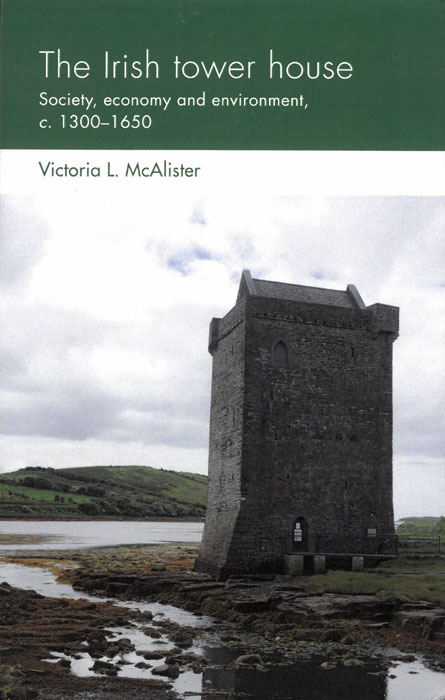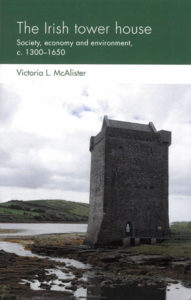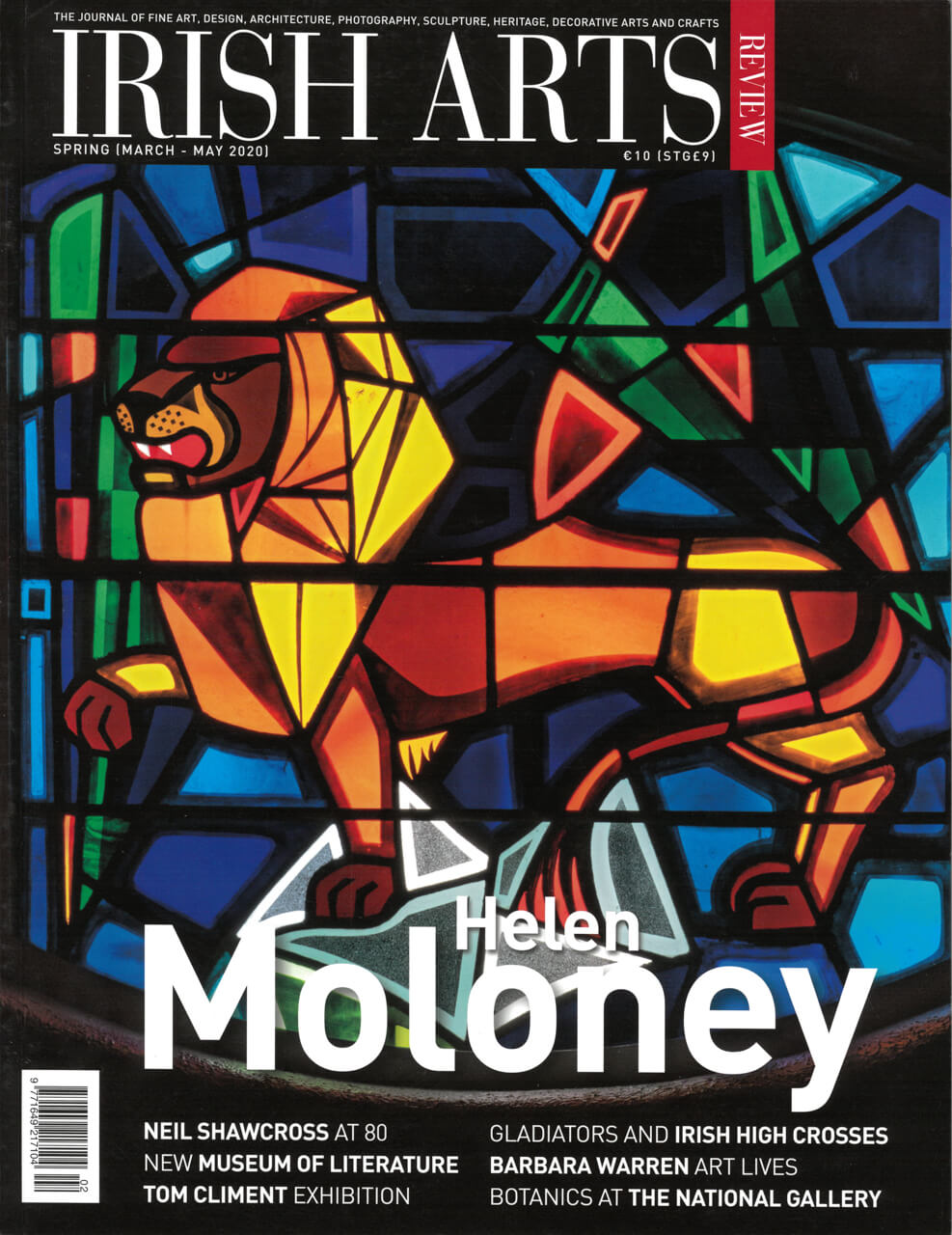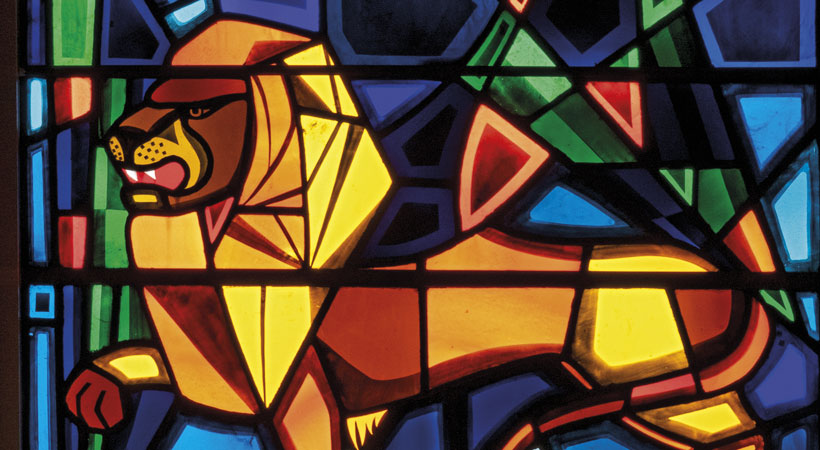
 The Irish Tower House Society, economy and environment c.1300-1650
The Irish Tower House Society, economy and environment c.1300-1650
Victoria L McAlister
Manchester University Press, 2019
pp 288 illustrated h/b
£80.00/€95.00 ISBN: 978-1-52612-123-3
Tadhg O’Keeffe
The tower house, popularly defined as the fortified residence of a later medieval lord, is unquestionably the single most familiar monument type to survive in the Irish landscape from the Middle Ages. Tower houses are found all over Ireland, but are especially common in the southern half of the island, in an arc that swings from Galway, south-eastwards across Clare and Limerick, through Cork and Tipperary, towards Kilkenny and Wexford, and northwards towards the former lands of the Pale. Examples are found along the entire coastline where it is possible to make landfall. They are also common in towns of medieval origin; such towns that lack tower houses today had them originally. Thousands were built between the 14th century and the early 17th century, with peaks in the 15th and 16th centuries.
For a long time, the popular narrative has placed endemic violence at the centre of the explanation for the proliferation of these towers. That they were defensible cannot be queried, nor can the assertion that they kept their occupants safe. But the narrative has never really been convincing. The loss of other domestic structures associated with them – halls for dining and administration, and agricultural buildings – has made the towers appear more military than was the case. In any case, Ireland was peaceful and prosperous for long stretches of the period in which towers were built. Victoria McAlister’s new book – remarkably, the first book to be devoted to a study of this ubiquitous monument type – should put the ‘endemic violence‚’ narrative to bed, if not send it to the grave. She locates the building boom within the context of an economy in which money could be made by enterprising agriculturalists, merchants and entrepreneurs. Her argument makes sense as she starts to unfold it; by the end of the book, the case is made.
The meat of the book is contained in six chapters. Chapter one places the tower house within its settlement context. McAlister succeeds in showing that the towers were active rather than passive in the evolution of the settlement landscape; she argues that, in essence, the towers are better understood not as responses to pressures on the landscape and its occupants, but as agents of nucleation in ever-developing landscapes. In the next chapter, she considers the economic context in which towers were built. It has long been clear that the towers functioned with an agricultural economy, but McAlister clears away a popular misconception; that the economy was not as strongly pastoral as has long been maintained. The evidence that it was a mixed agricultural economy is scattered across various types of source material and she marshalls that evidence well.
McAlister argues that, in essence, the towers are better understood not as responses to pressures on the landscape and its occupants, but as agents of nucleation in ever-developing landscapes
Chapters three and four address the movement of goods; the role of the natural environment directed how and to where goods moved, and the role of the tower house in the process. Refreshingly, McAlister shows that towers were built along rivers and in certain coastal locations, not solely for the purpose of monitoring movements and protecting settlements, but rather by landowners and entrepreneurs who saw economic opportunity in placing their towers in certain positions. The suggestion that tower house distribution relates to transport and trade is not earth-shattering, but this is the first time that the evidence is laid out properly.
That the penultimate chapter should bring us back into towns, to urban tower houses, is entirely appropriate, given that the final chapter discusses Ireland in the context of international trade networks, which were made possible through urbanisation.
McAlister’s book is not a ‘castle book‚’ in the tradition of the famous castle books of the past (such as by Harold Leask in 1941, Tom McNeill in 1997 or David Sweetman in 1999). It does not describe buildings in detail, nor does it adhere to the canon. Some well-known tower houses barely feature; some little-known towers are given their fifteen minutes. Relatively little is said about their origins and recent debates on the use of the internal spaces are avoided. To an extent, this is refreshing, but I think that McAlister’s opinions on such matters would be worth hearing at length, given that she has been to see so many towers. Critical reading reveals some circular thinking – her sample of sites does seem to predetermine her results – but one instinctively knows her analysis to be correct.
This book deserves to be read and absorbed by anybody interested in medieval Ireland, its architecture and its economy. McAlister is to be congratulated.
Tadhg O’Keeffe is a Professor in the School of Archaeology at University College Dublin.


The legacy of stained-glass artist Helen Moloney is in the vibrancy of her colours and her use of coloured glass and lead lines in an abstract manner, writes Bart Felle

Tom Climent’s recent paintings appear to edge more and more away from pure abstraction, writes Mark Ewart

Margo Banks is so instinctively attuned to her subject that her energetic approach and her subject matter are inseparable, writes Isabella Evangelisti